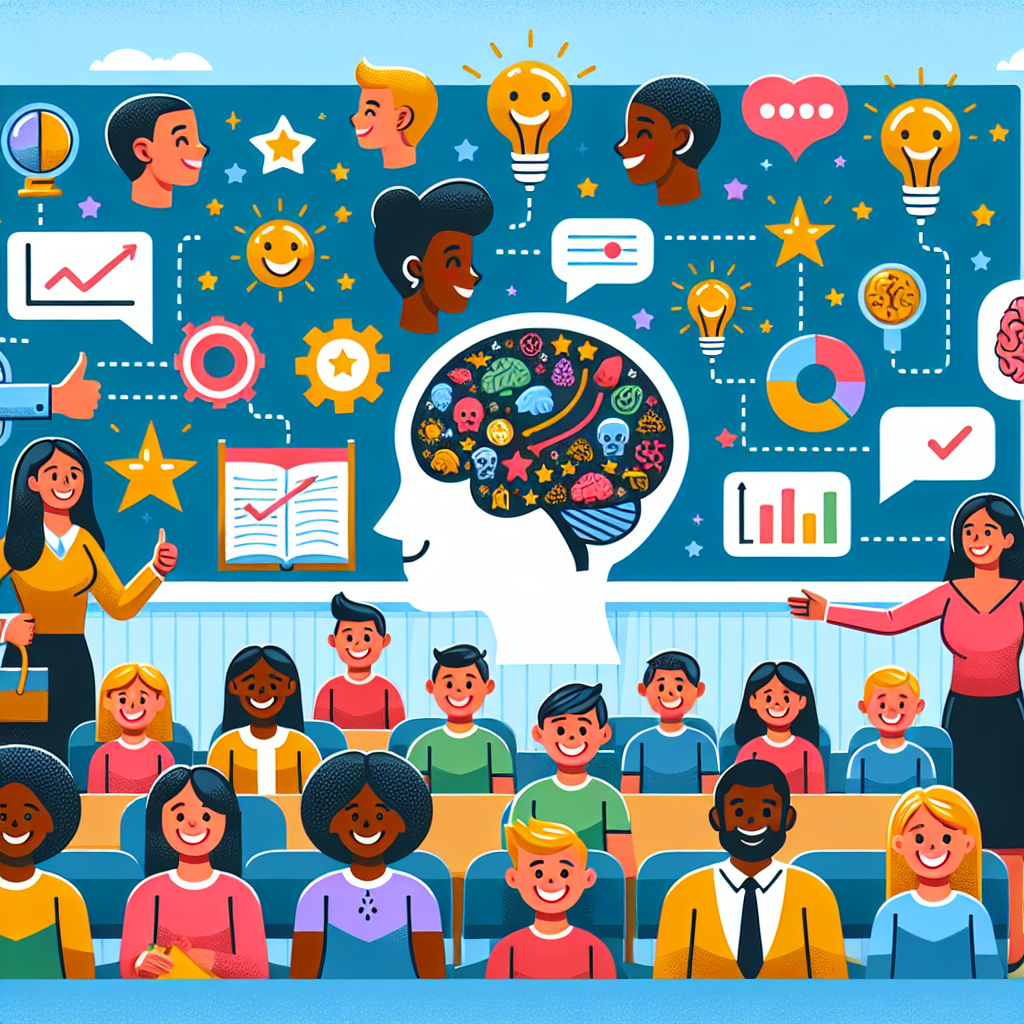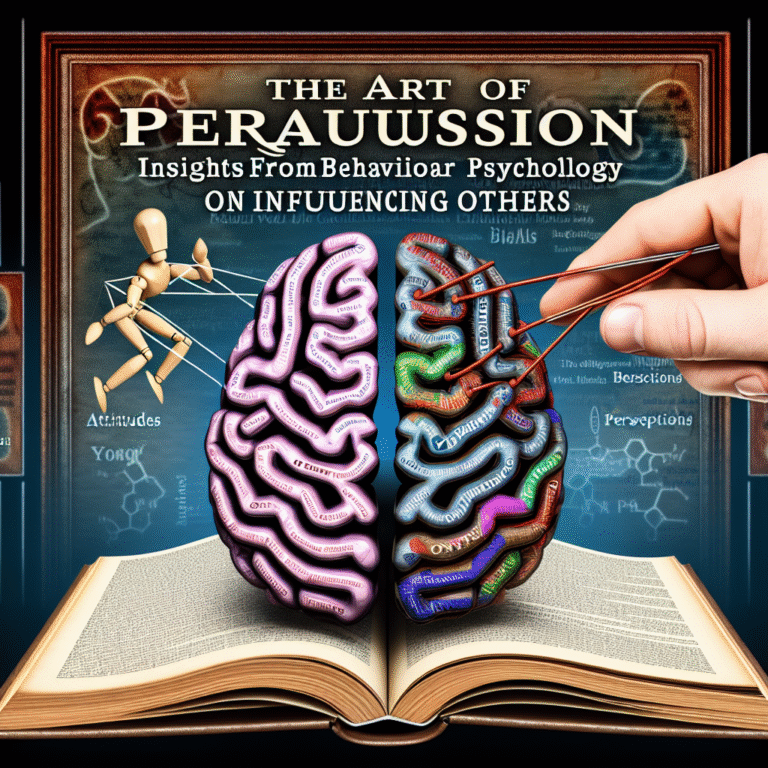
The Ultimate Guide to The Power of Positive Reinforcement: Enhancing Classroom Behavior with Behavioral Psychology
Introduction: A New Era of Learning
In today’s rapidly changing educational landscape, addressing classroom behavior effectively remains a significant challenge for educators. The traditional methods of discipline and punishment often fall short, fueling resentment and disengagement. Enter the transformative concept of positive reinforcement, a cornerstone of behavioral psychology that has proven its effectiveness in enhancing classroom behavior. Imagine a classroom where students feel motivated, engaged, and empowered to learn. This isn’t just a dream—it’s possible through the power of positive reinforcement. In this article, we will explore The Power of Positive Reinforcement: Enhancing Classroom Behavior with Behavioral Psychology, detailing its principles, applications, and potential to revolutionize not only behavior management but also the overall learning experience.
Understanding Positive Reinforcement
What Is Positive Reinforcement?
Positive reinforcement is a behavioral principle rooted in operant conditioning, a theory developed by B.F. Skinner. It involves encouraging specific behaviors by introducing favorable outcomes or rewards when the desired behavior is exhibited. This mechanism not only increases the likelihood of that behavior being repeated but also fosters a positive learning environment.
Types of Positive Reinforcement
- Acknowledgment: Simple praise or recognition from a teacher can boost a student’s confidence and motivate them to continue that behavior.
- Tangible Rewards: Stickers, certificates, or small prizes can serve as effective incentives for younger students.
- Increased Privileges: Allowing a student to choose a classroom activity or to lead a discussion can reinforce positive behavior through empowerment.
- Social Rewards: Group appreciation or positive feedback from peers can enhance cooperation and belonging among students.
The Core Principles of Behavioral Psychology
Behavioral psychology provides a robust framework for understanding how positive reinforcement influences student behavior. Here, we delve into the essential principles that educators can leverage:
1. Motivation and Engagement
Motivation is crucial for successful learning. By utilizing The Power of Positive Reinforcement: Enhancing Classroom Behavior with Behavioral Psychology, educators can create a motivating atmosphere. For instance, a middle school teacher implemented a system of earning points for good behavior, which students could later redeem for free time. The results? A noticeable decrease in disruptions and an increase in attentiveness.
2. Consistency and Timing
The effectiveness of positive reinforcement hinges on consistency. Behavior should be reinforced immediately to create a clear connection between the action and the reward. This immediacy strengthens the behavior over time. For example, a study conducted with kindergarten students showed that those who received immediate praise for raising hands before speaking were more likely to engage respectfully throughout the school year.
3. Individualization
Each student is unique, and what motivates one child might not resonate with another. Tailoring positive reinforcement strategies to meet individual needs can enhance engagement. A third-grade teacher discovered that one student responded more positively to private praise rather than public acknowledgment, highlighting the importance of personalization in reinforcement strategies.
Case Studies: Real-World Applications
Case Study 1: The Point System in a High School
A high school in California adopted a point system for rewarding positive behavior. Students earned points for attending class, participating, and helping peers. These points could be redeemed for privileges like attending a special event or choosing a lunch buddy. Over the course of the semester, the number of tardies and absences significantly decreased, demonstrating The Power of Positive Reinforcement: Enhancing Classroom Behavior with Behavioral Psychology in action.
Analysis: This case study underscores the role of structured systems in cultivating positive behavior while simultaneously promoting a sense of community and teamwork.
Case Study 2: Behavior Contracts for At-Risk Students
An alternative school for at-risk youth implemented individualized behavior contracts that detailed expected behaviors and associated rewards. Students had significant input into the contracts, which allowed them to take ownership of their behavior. The school observed a 40% reduction in behavioral incidents and an improvement in overall classroom morale.
Analysis: This illustrates the importance of student involvement in the reinforcement process, affirming that engagement and empowerment are key components of a successful strategy.
Case Study 3: Classroom Economy Games
In a fifth-grade classroom, the teacher instituted a simulated economy where students could earn "classroom currency" for good deeds and academic achievements. They could use the currency to "buy" classroom privileges or items for a pretend storefront. The approach generated excitement and competition, leading to increased participation and collaboration.
Analysis: Gamifying the classroom experience through positive reinforcement not only enhances engagement but also teaches students important lessons about responsibility and the value of their actions.
Chart: Impact of Positive Reinforcement on Classroom Behavior
| Type of Strategy | Example of Implementation | Effectiveness on Behavior |
|---|---|---|
| Acknowledgment | Regular verbal praise | 25% increase in participation |
| Tangible Rewards | Sticker chart | 30% increase in homework submission |
| Increased Privileges | Choice in group activities | 20% decrease in distractions |
| Social Rewards | Peer recognition | 15% improvement in team projects |
Implementing Positive Reinforcement in the Classroom
Step 1: Define Clear Expectations
Start by clearly outlining behavioral expectations and associated rewards. Engage students in this process to ensure that they understand what is required of them.
Step 2: Choose Appropriate Reinforcers
Identify what motivates your students. This could involve simple conversations or surveys to gauge interest.
Step 3: Monitor and Adjust
Track the effectiveness of your strategies. If certain reinforcers aren’t working, be flexible and willing to try new approaches.
Step 4: Foster a Positive Environment
Create an atmosphere that celebrates success. Incorporate regular meetings to discuss achievements and encourage students to share their positive experiences.
Conclusion: The Path Forward
The Power of Positive Reinforcement: Enhancing Classroom Behavior with Behavioral Psychology is not merely a trend—it’s an essential part of effective teaching that can transform the classroom dynamic. By fostering motivation, engagement, and individualization, educators can promote a culture of respect and collaboration, leading to improved academic performance and personal growth for students.
As you embark on this journey, remember that the impact of positive reinforcement extends beyond the classroom. Teaching students the value of positive behavior not only benefits them academically but also prepares them for success in life. It’s time to embrace the power and potential of positive reinforcement in education.
FAQs
1. What are the benefits of positive reinforcement in the classroom?
Positive reinforcement encourages desired behaviors, enhances student engagement, boosts academic performance, and fosters a positive classroom environment.
2. How can I implement positive reinforcement effectively?
Define clear expectations, choose appropriate reinforcers, monitor their effectiveness, and create an encouraging classroom atmosphere.
3. Can positive reinforcement work for all students?
Yes, but it may require some individualization. What motivates one student may not be effective for another, so be prepared to adapt your strategies.
4. How does positive reinforcement relate to behavioral psychology?
Positive reinforcement is a fundamental principle of behavioral psychology that emphasizes rewarding desired behaviors to increase their occurrence.
5. What if positive reinforcement doesn’t seem to work for certain students?
Evaluate the reinforcement strategy’s timing, consistency, and relevance. Engage students in discussions to determine what might motivate them more effectively.
By understanding The Power of Positive Reinforcement: Enhancing Classroom Behavior with Behavioral Psychology, educators can not only manage classroom behavior more effectively but also inspire a lifelong love of learning in their students.















